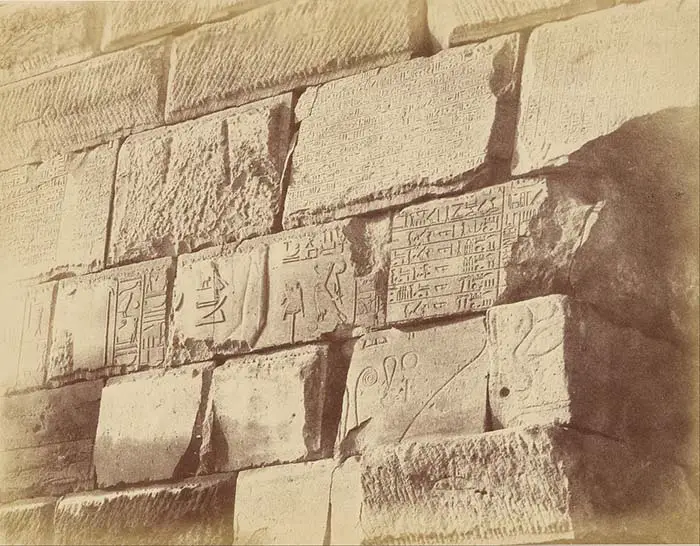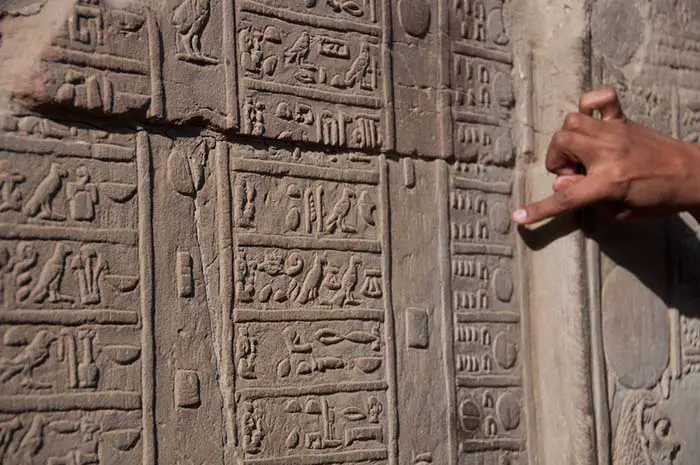Times of the Egyptian Calendar
The Egyptian calendar was broken down as follows:
- One week was ten days.
- Three weeks was one month.
- Four months was one season.
- Three seasons and five holy days was one year.
 Depiction of an Egyptian hieroglyphic calendar
Depiction of an Egyptian hieroglyphic calendar
The first season – was called Akhet, which means flood or inundation. It included the months of Tekh, Menhet, Hwt-Hrw, and Ka-Hr-Ka.
The second season – was called Proyet, which means emergence. Its months were Sf-Bdt, Redh Wer, Redh Neds, and Renwet.
The third season – was called Shomu, which means low water. The names of its months were Hnsw, Hnt-Htj, Ipt-Hmt, and Wep-Renpet.
Each month consisted of three ten-day periods called decades or decans. Although the months were individually named, they were commonly referred to by the name of the festivals they represented. The last two days of each decade were considered holidays and the Egyptians didn’t work.
A month was 30 days long on the Egyptian solar calendar. Since this didn’t account for all the days in the year, the Egyptians added an intercalary month that occurred outside of the regular calendar year.
The intercalary month was five days long, which meant that the Egyptian solar calendar lost about one-fourth of a day every year relative to the actual solar year. The five intercalary days were used to celebrate the gods’ birthdays and the Egyptians weren’t expected to work during this time.
 © Robert Young – Calendar at Kom Ombo
© Robert Young – Calendar at Kom Ombo
Decans are groups of stars in ancient Egyptian astronomy that were used to tell time at night. The rising of each group indicated a new sidereal day. There were 36 groups, or decans, of stars. Each decan consisted of ten days, which yielded a 360-day year.
Names of the decans are known but their locations and their relationship to modern constellations are unknown. A sidereal day is defined as the time taken for one rotation of the earth relative to the stars. It’s approximately four minutes shorter than a solar day.
The Canopus Decree, issued by Ptolemy III, provided for a sixth epagomenal day every fourth year in order to correct this discrepancy. However, the priests and the population in general resisted this change and it was eventually abandoned until Augustus established the Coptic calendar in 25 BC.




